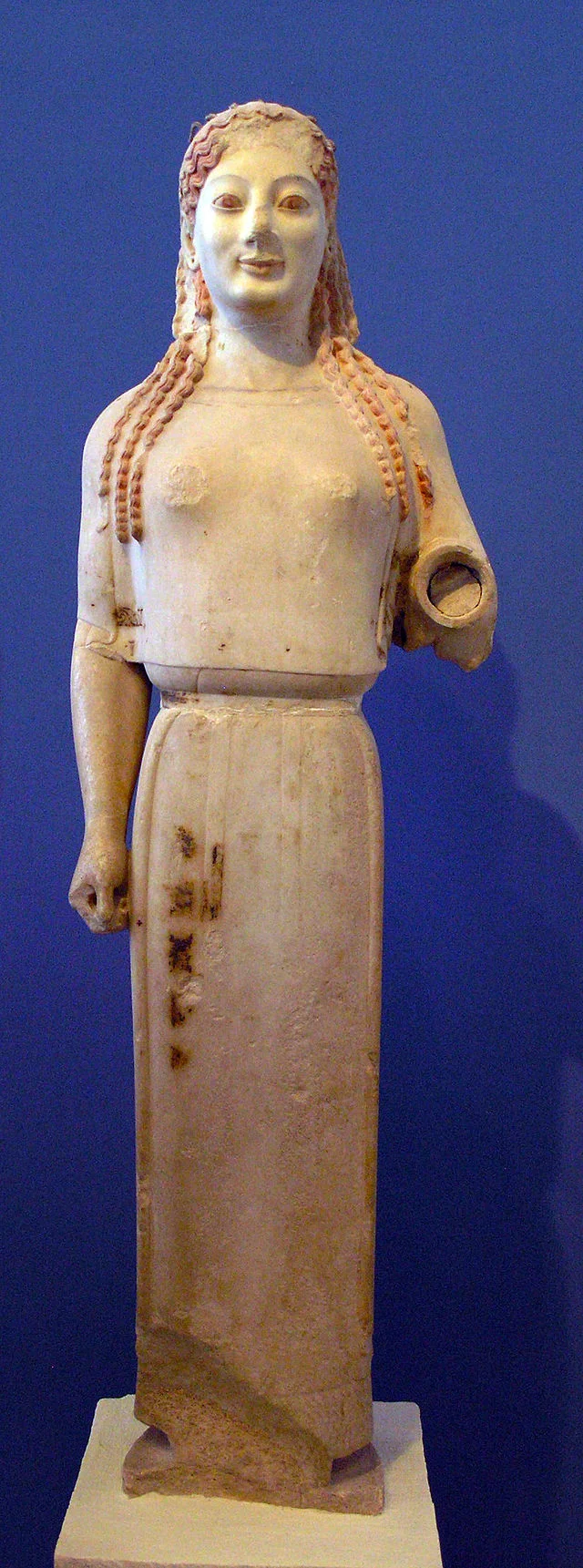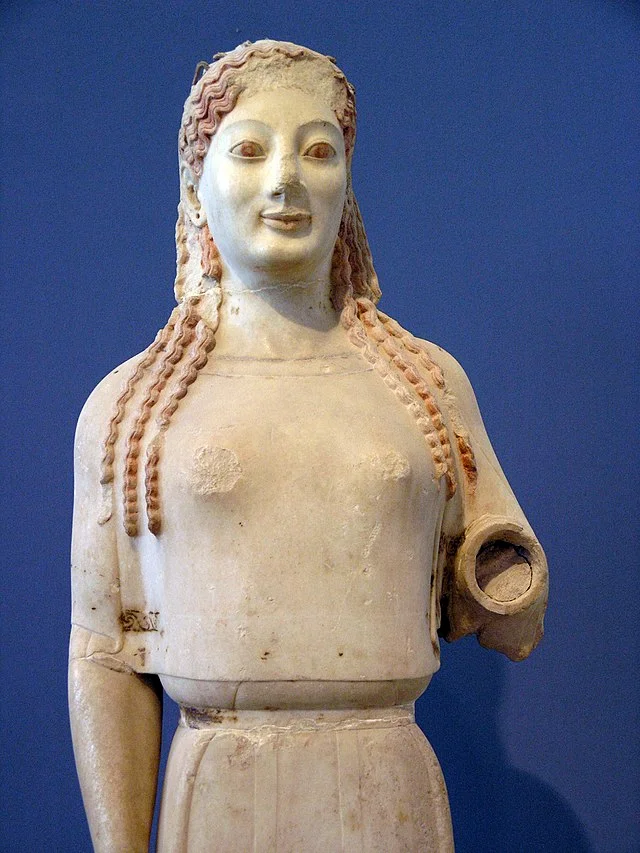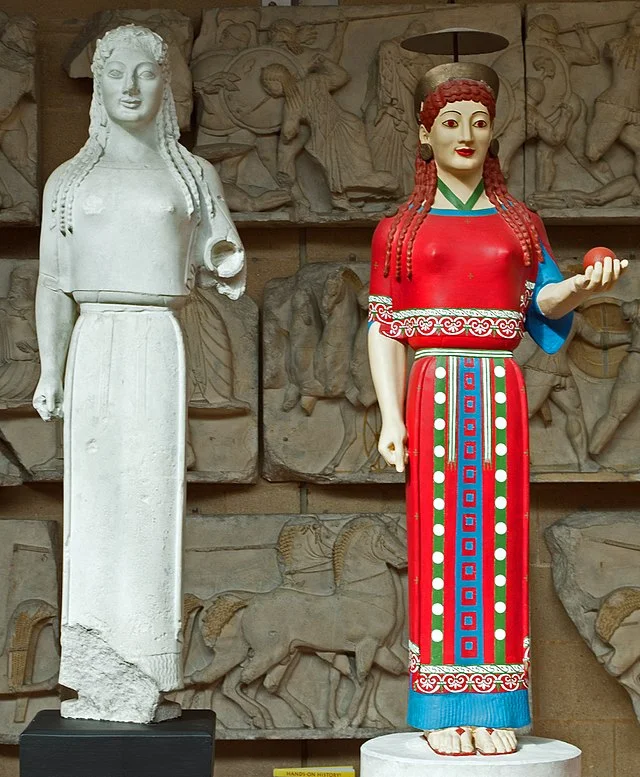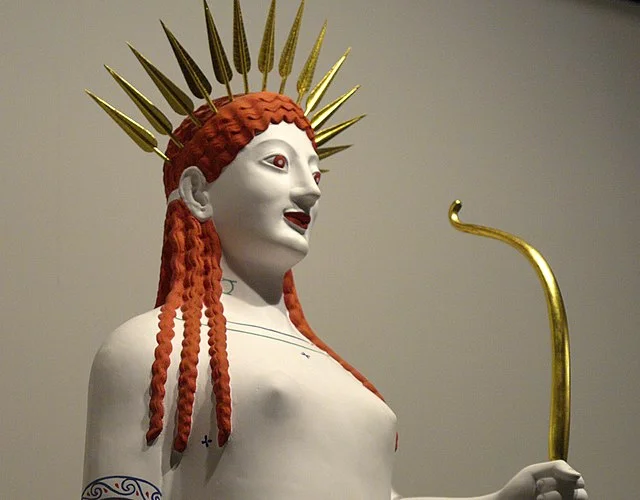The Peplos Kore is a well-known statue from ancient Greece. It dates to around 530 BC and was discovered on the Acropolis in Athens. The statue is an example of the Archaic Greek style and represents a young woman, or kore.
Get your dose of History via Email
Description

The statue stands about 4 feet tall and is made from marble. The Peplos Kore is named after the garment she wears, known as a peplos. The peplos was a simple woolen dress worn by women in ancient Greece. The garment covers her body from shoulders to feet, and its straight lines emphasize the statue’s verticality.
Her face is smooth, with an archaic smile, typical of Greek statues of this period. Her hair, arranged in braids, falls over her shoulders. Originally, the statue would have been brightly painted, though most of the color has faded over time. Traces of red, blue, and green pigments are still visible in some areas.
Significance

The Peplos Kore provides key insights into Archaic Greek art and society. During this period, kore statues were often used as votive offerings or grave markers. Scholars debate whether the Peplos Kore represents a goddess, such as Artemis or Athena, or an ordinary mortal woman.
The detailed rendering of her clothing and posture reflects advancements in sculpture techniques. Early Greek statues were stiff and lacked naturalism, but the Peplos Kore shows a shift towards more lifelike proportions and poses. The Peplos Kore is part of a larger tradition of depicting women in Greek art, where the female form was typically clothed, unlike the male nude statues.
Restoration and Display

The Peplos Kore was discovered during excavations on the Acropolis in the 19th century. It was found in a damaged condition, with its head separated from its body. However, restoration efforts successfully reassembled the statue. Today, it is housed in the Acropolis Museum in Athens, where it is one of the most popular exhibits.
Conclusion
The Peplos Kore is an important artifact that sheds light on ancient Greek culture, religion, and artistic development. Through its intricate details and craftsmanship, the statue provides valuable information about the roles of women in ancient Greece and the evolving nature of Greek sculpture. Its discovery on the Acropolis further highlights the religious significance of kore statues in Greek sanctuaries.
Source:

